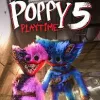When I first booted up Bad Parenting 1: Mr. Red Face, I was met by an atmosphere that felt as unorthodox as it was intriguing. I have experienced many games that centered around whimsical life simulations, yet nothing quite prepared me for an experience that forced me to navigate the complexities of raising a family under unconventional circumstances. The game's title promised an eccentric expedition into the realm of parental quirks, and I was soon convinced that I was in for a wild ride. I found myself both amused and challenged by a narrative that seemed to playfully mock the expectations of responsible upbringing while simultaneously offering thoughtful, layered commentary on personal choices.
Engaging Gameplay Dynamics
The gameplay in Bad Parenting 1: Mr. Red Face is a blend of strategy, chaos, and moments of unexpected warmth. I found the controls to be surprisingly intuitive, though the unpredictability of various events meant that every decision carried weight. Each level presented a new situation where handling the family dynamics required more than just standard troubleshooting—it demanded creativity and spontaneity. Whether it was managing the quirky antics of children or balancing the whims of an eccentric partner, I often found myself second-guessing my decisions, which only enhanced the immersive nature of the game.
Art and Aesthetics
The visual presentation of the game is an art form within itself. From the very beginning, the vibrant color palette and distinct character designs captured my attention. The protagonist, affectionately nicknamed Mr. Red Face due to his frequently flushed expression, is rendered with a combination of stylized animation and subtle details that evoke empathy. The backgrounds, reminiscent of animated storybooks, are layered with intricate details that reward observant players. I couldn’t help but appreciate the deliberate use of color and contrast that not only underlines the humorous tone of the narrative but also reflects the emotional spectrum associated with the challenges of parenting.
Narrative Exploration
From my perspective, the storyline is both quirky and surprisingly profound. The game’s script is filled with moments that are humorous, yet they hint at the deeper lessons learned from navigating life as an unconventional caregiver. As I progressed, I encountered dialogue that was witty, self-aware, and occasionally touching. I often found myself reflecting on the scenarios presented on screen, wondering how they might parallel my own life experiences. The narrative takes risks by subverting the typical expectations of a parenting simulation, which resulted in a powerful, albeit offbeat, emotional journey.
Sound and Atmosphere
Another element that caught me off guard was the detailed sound design and atmospheric score. The game employs an unconventional musical background that manages to be both playful and evocative. Every sound effect—from the clamor of playful chaos in the background to the distinct comedic cues that punctuate the absurdities of daily scenarios—further deepened my connection to the experience. I recollect moments when the soundscape shifted dramatically based on the developing storyline, creating an ambiance that resonated with every choice made within the simulation.
Unique Parenting Mechanics
One of the most innovative aspects I experienced was the variety of parenting mechanics interwoven throughout the gameplay. Unlike typical simulations where the family unit operates on a linear spectrum, Bad Parenting 1: Mr. Red Face challenges players with a dynamic system of responsibilities. I was tasked with navigating unexpected hurdles in household management, all while balancing professional ambitions and the bizarre demands of each family member. The game cleverly incorporates a series of mini-missions where choices influence not just the immediate situation but also the long-term interactions with each family member. Each decision was laden with consequences that made me weigh my options carefully, turning routine tasks into moments of critical decision-making.
Character Development and Interaction
Interpersonal relationships form the backbone of the experience in this game, and I found that the characters were as beautifully flawed as they were endearing. As I engaged with various family members, their personalities unfolded in multi-dimensional ways—a stark divergence from typical video game character arcs. I witnessed moments of heartfelt connection and humorous misunderstandings that brought each interaction to life. The enigmatic Mr. Red Face himself is a mix of vulnerability and resilience. His journey through frustration and eventual self-discovery is articulated with such care that I felt genuinely invested in his story. The interactions felt organic, with conversations that mirrored everyday life in their unpredictability and raw honesty.
Challenges and Rewards
Playing through each scenario, I was continuously presented with challenges that were as unpredictable as they were engaging. Every level seemed to offer a mix of complex dilemmas and light-hearted mini-tasks. I vividly remember the tense moments when I had to hurry to avert family mishaps, only to be rewarded later with quirky bonuses that celebrated the successful navigation of these chaotic events. The reward system is designed to encourage players to experiment with different approaches, and I found myself replaying segments in order to uncover alternate outcomes. It was an invigorating process that brought a sense of accomplishment rarely felt in conventional simulations.
Strategy and Decision Making
What struck me most during my time with Bad Parenting 1: Mr. Red Face was the intricate balance between planned strategy and spontaneous reaction. Each scenario allowed me the freedom to plot my course, yet the inherent unpredictability of both family dynamics and environmental influences left room for improvisation. I felt like I was not just guiding a character through stages, but also orchestrating a delicate balance of harmony and chaos—a microcosm of real-life challenges. This duality in the game mechanics provided an intellectual thrill that consistently kept me on my toes. As I navigated through the day-to-day responsibilities, I was constantly forced to adapt and rethink before making my next move.
Replay Value and Customization
One of the aspects I appreciated the most was the variety of customization options and the inherent replay value. The game does not simply adhere to a single narrative path; rather, it offers multiple branching storylines based on the decisions made along the way. I explored different strategies during subsequent playthroughs, each time uncovering new facets of the characters and the households' idiosyncrasies. Moreover, customization allowed me to tweak details ranging from household layouts to personal styles for the characters, further enhancing the connection I felt towards the in-game environment. The variety offered made each replay session feel like a fresh opportunity to delve deeper into the eccentric world that the game constructs.
Balancing Humor with Serious Themes
Throughout my journey, I noticed how the game artfully balances humor with moments of introspection. While the gameplay is laced with absurd events and comical mishaps, there remains a thread of genuine emotion woven through each level of gameplay. I found that behind every hilarious scenario was an underlying commentary on the trials and tribulations of parenthood and life itself. This steady mix of levity and gravity kept my interest piqued, as I was constantly torn between laughter and reflective thought. The developers managed to capture the imperfect beauty of everyday life, where even the most chaotic moments carry an essence of warmth and compassion.
Learning Through Chaos
The experience of playing Bad Parenting 1: Mr. Red Face has provoked within me an appreciation for the learning curves embedded in seemingly chaotic situations. I learned that every decision, no matter how minor, can have far-reaching effects on the storyline and the dynamics of the gameplay. This game has taught me the value of strategic planning as well as the importance of going with the flow when circumstances take an unexpected turn. Each failure and every victory, however small, added depth to my understanding of the characters and their interwoven journeys. I found that the iterative learning process seamlessly fits into the very fabric of how the game is structured, ultimately making every session an opportunity to grow and refine my approach.
Unexpected Humor and Subversive Elements
Another memorable aspect of my gameplay was the unexpected humor that surfaced in the most unconventional ways. The game often takes a playful jab at traditional role expectations by subverting typical narrative tropes found in family simulations. As I maneuvered through a series of absurd family dilemmas, I was frequently met with scenarios that defied the norm and added layers of satirical wit to the storyline. The humor felt organic rather than forced, and it resonated with my personal experiences of navigating life’s unpredictable moments. The game is clearly designed to evoke both laughter and introspection, and I found that this unique mix made every play session a captivating exploration of modern life’s contradictions.
Emotionally Charged Interludes
While the majority of the game is filled with vibrant colors and mischievous antics, there are also interludes that delve into more somber territories. I experienced moments where the gameplay slowed down, allowing me to reflect deeply on the multifaceted challenges of life and the responsibility of nurturing relationships. In these interludes, the dialogue and visual cues carry a weight that contrasts sharply with the light-hearted exterior of the game. It was in these moments that I truly grasped the emotional complexity and attention to detail the developers have invested in crafting a world that feels both fun and resonant. These reflective sequences, punctuated by serene musical interludes, provided a much-needed balance to the otherwise unpredictable gameplay.
Interactivity Beyond the Screen
What I found particularly impressive was the game’s ability to extend interactivity beyond the digital realm. The decisions I made during gameplay, though set in a whimsical world, prompted me to think critically about real-world scenarios involving responsibility, empathy, and even personal growth. I noticed that the choices echo aspects of genuine life challenges, reinforcing the notion that handling personal relationships requires as much adaptability and strategy as any game might require. This connection between the virtual scenarios and real-life reflections added an invaluable layer of immersion. I could easily lose track of time while contemplating the nuanced interactions within the family dynamics, making every session not only enjoyable but also thought-provoking.
Pros

- Unique art and aesthetics that combine humor and nuance
- Innovative gameplay mechanics that encourage creative problem-solving
- Engaging narrative with emotionally charged interludes
- Intuitive control mechanisms balanced with unpredictable scenarios
- Rich sound design that enhances the gaming atmosphere
- Extensive customization options that offer a fresh replay value
Cons

- The unconventional style might not appeal to all gaming tastes
- The unpredictable nature of gameplay can be frustrating for some players
- The steep learning curve in managing multi-layered family dynamics might overwhelm newcomers
Screenshots
To download the app, you will get links to the Official Website and/or official digital markets.












